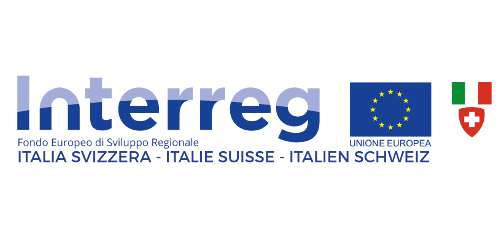On October 24th, 1603, Pedro Enriquez de Acevedo, Count of Fuentes and Spanish Governor of Milan began the construction of a fort on the top of the hill adjoining the small village of Monteggiolo, at the confluence of the Valtellina and Valchiavenna valleys. In the square that was created from the excavations, an Augustinian friar, planted a wooden cross on the place where the church would be built, celebrated Mass and prayed to the martyr St. Barbara, the patron of the artillery. The decision to build a fortress on the border caused a diplomatic backlash from the Grisons, allies of the French and Venetians, not achieving positive results. The top of the hill was leveled to create an immediate plan, three hundred meters long and one hundred and twenty metres wide. Work on raising the masonry, the battlements, turrets continued day and night. The stony material was found on the spot, many of the lime kilns located along the western shore of the lake were requisitioned and the owners forced to transport all materials by lake on the “comballi” (typical wooden vessel in use until the mid of ‘900). The work continued in unabated relief and after about three years, carried out throughout day and night by two thousand workers under the command of the military architect Gabrio Brusca and protected by eight companies of soldiers with twenty pieces of artillery, towards the end of 1606 the colossal task was completed. The fortress, of irregular plan, built in “U” shape, included barracks for the soldiers, a governor’s palace, a church, a mill with oven, and some water tanks and, in the basement, warehouses.
Also, The Count of Fuentes integrated the surrounding towers – the Tower of Sorico, the Tower of Passo, the Fort of the River Adda, the Tower of Borgofrancone, The Tower of Curcio and the Tower of Fontanedo. For two centuries the towers represented the defense line of the northern border of the Spanish dominions against the Protestant Grisons in Valtellina and a threat to the latter, that in fact gained from Napoleon Bonaparte entered in Milan in 1796, the destruction of the Fort now a pacific agricultural dwelling. In July of that year from Como hundreds of sappers travelled up (conducted by French General Rambeau) and colossal fortress fell almost to pieces. In the years between 1820 and 1859 groups of bandits found refuge in the ruins of the fort. The Austrian forces were unable to vanquish these bandits, though kept them under control. In the early decades of this century the General Staff of the Royal Italian Army assumed the construction of a fortified barrier in Pian di Spagna between the rivers Adda and Mera. Fort Fuentes was discarded as its location wasn’t ideal; however, it remained included as a hypothesis observatory station and subsidiary of artillery in support of the Forte Montecchio North.
During the 1915-1918 conflict, as part of the defensive line occupation of the Advanced North Border, known as Linea Cadorna, on the hill of Fuentes cannon houses were built for heavy field artillery, north of the Spanish pincers, and to deprive the enemy of every reference point the engineers demolished the round Spanish tower that stood on the west side. Today the Spanish fort, now owned by the Province of Lecco, clearly legible in its facilities and infrastructure, fascinating in its impressive ruins, is immersed in the peace of the majestic landscape of the upper Lake Como.
(Text from the Brochure "Colico Outdoor")
Opening hours
March: Saturday and Sunday: from 10am to 5pm
April: Saturday, Sunday and bank holidays: from 10am to 5pm - 18, 22, 23 and 24 April: from 10am to 1pm
May: Saturday, Sunday and bank holidays: from 10am to 5pm - 29 and 30 May: from 10am to 1pm
June: Saturday, Sunday and bank holidays: from 10am to 5pm - Weekdays: from 10am to 1pm
July and August: every day: from 10am to 5pm
September: Saturday and Sunday: from 10am to 5pm - Weekdays (until 26 September): from 10am to 1pm
October: Saturday and Sunday: from 10am to 5pm
November: Saturday and Sunday: from 10am to 1pm
December: Open from 26 to 30 December: from 10am to 1pm
Last admission 60 minutes before closing time. Acess is not allowed outside the opening times.
Closed in case of bad weather.
The fort can be visited by appointment for organized groups any day of the year. For agreements contact the secretariat.
Tickets
Adults: € 8,00
Children 6-17 years: € 4,00
Children up to 5 years: free of charge
Comulative ticket (Forte Montecchio Nord and Forte Fuentes): Adults € 15,00 - Children 6-17 years € 8,00
Via Forte Fuentes, 29 - COLICO
info@fortemontecchionord.it
www.fortedifuentes.it
+39 0341 940322


